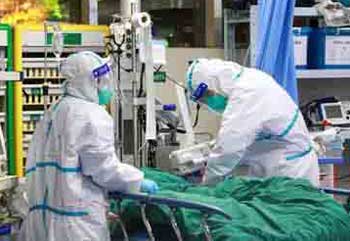– Dr. Sravya Chowdary Tipirneni –
There has been so much emphasis for the past month about hand hygiene due to COVID-19 pandemic.Also there has been a huge spike of people suffering from rashes on their palms. This is enough proof about how this is the one area of our body that is the most exposed to all the dangerous effects of both our physical and chemical environment, in addition to our own body dynamics internally. Understanding the cause of rash and symptoms is very essential to treat the condition.A rash can cause your skin to itch, burn, or develop bumps. It can be a sign of an infection or exposure to an irritant.One can develop rash all over the bodyincluding the palms of the hands.
Any rash on our palms can be due to an internalor an external factor.The rashes usually present with itching burning, redness and peeling of skin.Severe cases can have cracks and slight bleeding as well.
When the patient complains of a rash it is extremely important for to take a very detailed historyto elicit the possible causes for the rash.
There are different conditions that may cause development of a rash on your palm. Some of the most common includean allergic reaction, dry skin, contact dermatitis, psoriasis, hand, foot, and mouth disease, dyshidrotic eczema, impetigo and ringworm.
The causes of palm rashes range in severity, but most are not a sign of a more serious health condition. The most common causes are listed below.
Extremely dry skin or Dermatitis:
The most common complaint seen these days is that of flaring up of eczemas. The main reason being the compulsive and frequent handwashing that is associated with the Corona virus outbreak.If we take adequate care, use the right products, moisturize religiously and frequently throughout the day with ceramide based thick creams, we will not suffer from hand wash caused Eczema.This is also called ” housewife’s eczema”.
Allergic or irritant reactions:
These both are forms of Eczemas itself due to either internal or external factors. The most common reasons can be as simple as a hand wash, detergent, excess water contact. Some individuals are also allergic to the flowers that they touch during Puja.Other common causes are chemicals, cooking substances as well as change in weather.
Pompholyx:
This kind of Eczema usually presents as tiny fluid filled blisters on the sides of our fingers or toes. It is extremely itchy in nature and can also get secondarily infected with bacteria due to the patient constantly scratching.It is very common in patients who sweat a lot.
Psoriasis:
We all know this as a hereditary or sporadic autoimmune condition. The patients have well defined scaly red plaques on the palms. The patient might or might not have similar lesions elsewhere on his or her body. This usually tends to flare up in winters or under stressful conditions.
Bacterial or fungal infections:
Ringworm is common and is very itchy with a very visible ring-shaped raised lesion with Central clearing. Bacterial / Staphylococcal infections are more common in kids as they come in contact with a lot of play material and play mates and might not always wash their hands immediately.
In children viral infection such ashand foot and mouth disease present with typical blisters on the palms and soles is contagious.
Advice:
Avoidance of the identified triggers, well moisturized skin, gentle yet effective cleansing products, topical medications when necessary, used judiciously can always help to deal with palm rashes depending on the cause of the rash. Some rashes heal on their own and requires no treatment. If you begin to experience additional symptoms with your palm rash or symptoms worsen, it is adviced to visit your dermatologist.
____________
About the Author
Dr. Sravya Chowdary Tipirneni
Author and Consultant
Dr. Sravya Chowdary Tipirneni, Consultant Dermatologist and Cosmetologist, Columbia Asia Hospital Whitefield
Disclaimer : The views expressed by the author in this feature are entirely her / his own and do not necessarily reflect the views of INVC NEWS.
















